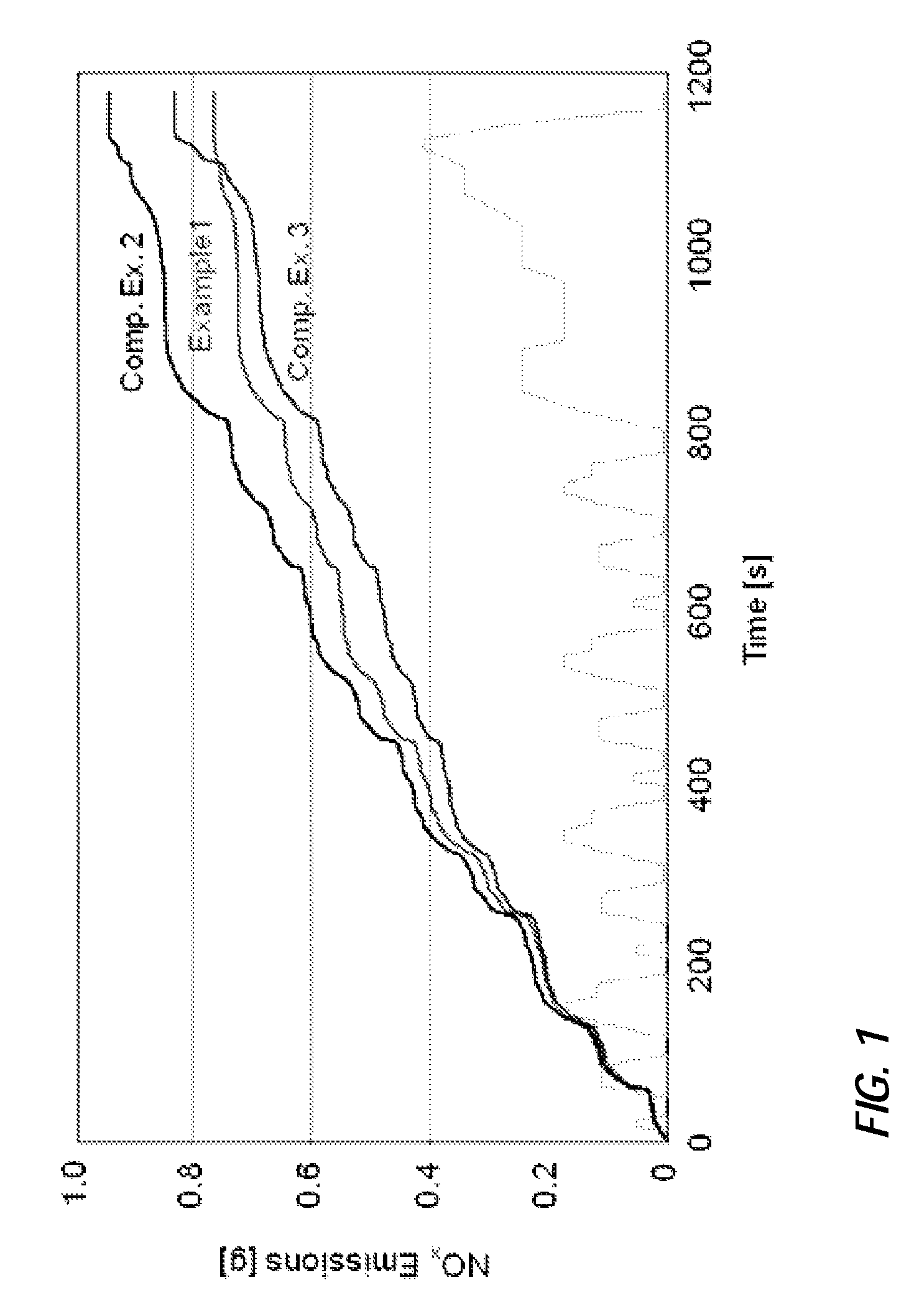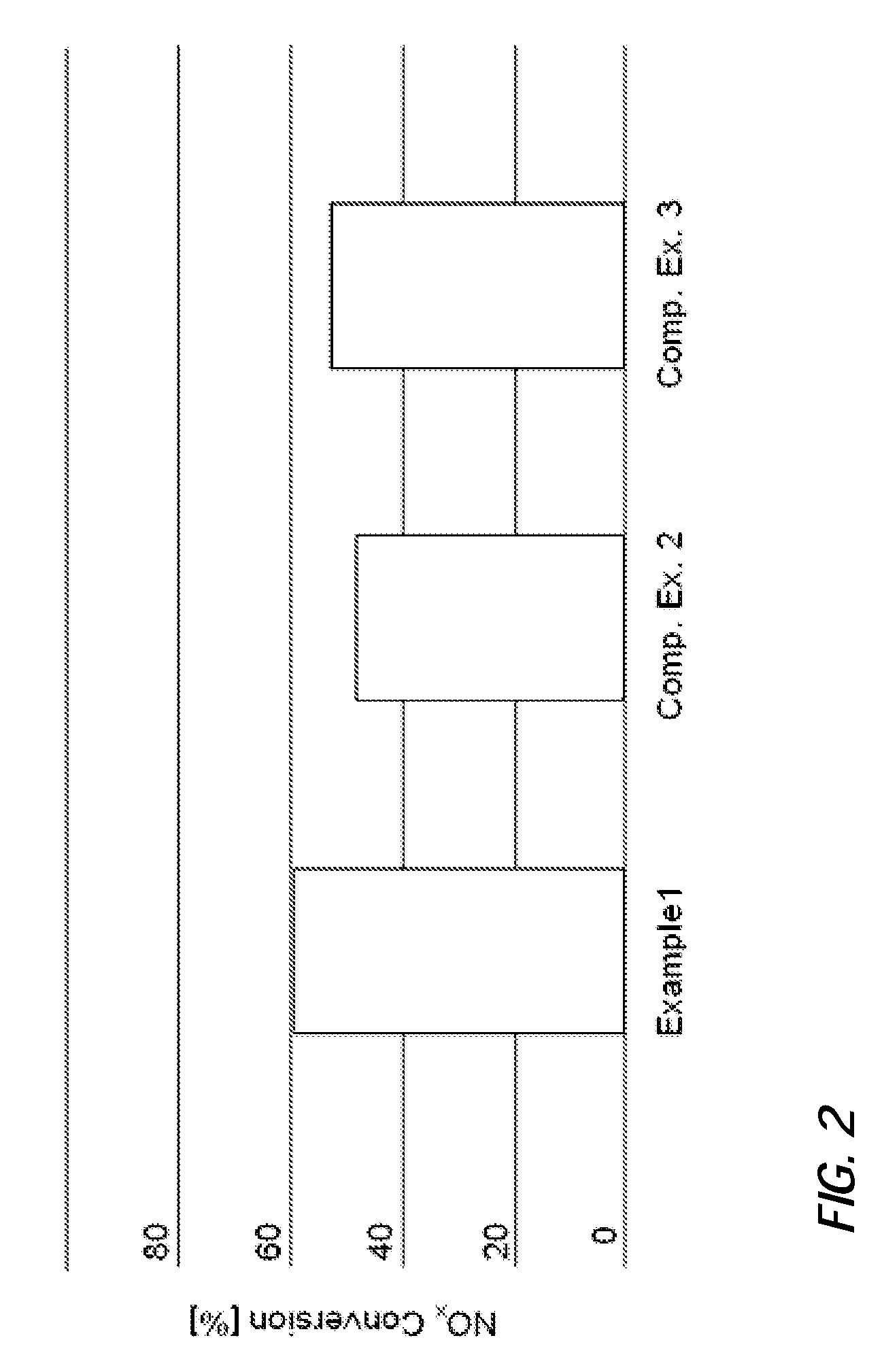Cu-CHA/Fe-MFI mixed zeolite catalyst and process for the treatment of NOx in gas streams
a technology of mixed zeolite and cucha, which is applied in the direction of physical/chemical process catalysts, separation processes, arsenic compounds, etc., can solve the problems of difficult precise metered addition of ammonia, unavoidable use of specific diesel particulate filters, and difficult reduction of nitrogen oxides to nitrogen
- Summary
- Abstract
- Description
- Claims
- Application Information
AI Technical Summary
Benefits of technology
Problems solved by technology
Method used
Image
Examples
example 1
[0105]A catalyst composition was prepared comprising 1.35 g / in3 of a zeolite of the CHA structure type, said CHA-type zeolite having a silica to alumina ratio (SAR) of approximately 30 and containing 3 wt.-% of copper based on the total weight of the CHA-type zeolite, 1.35 g / in3 of a zeolite of the MFI structure type, said MFI-type zeolite having a silica to alumina ratio of approximately 26 and containing 3.8 wt.-% of iron based on the total weight of the MFI-type zeolite, and 0.3 g / in3 of a silica-alumina binder.
PUM
| Property | Measurement | Unit |
|---|---|---|
| Density | aaaaa | aaaaa |
| Density | aaaaa | aaaaa |
| Weight | aaaaa | aaaaa |
Abstract
Description
Claims
Application Information
 Login to View More
Login to View More - R&D
- Intellectual Property
- Life Sciences
- Materials
- Tech Scout
- Unparalleled Data Quality
- Higher Quality Content
- 60% Fewer Hallucinations
Browse by: Latest US Patents, China's latest patents, Technical Efficacy Thesaurus, Application Domain, Technology Topic, Popular Technical Reports.
© 2025 PatSnap. All rights reserved.Legal|Privacy policy|Modern Slavery Act Transparency Statement|Sitemap|About US| Contact US: help@patsnap.com


